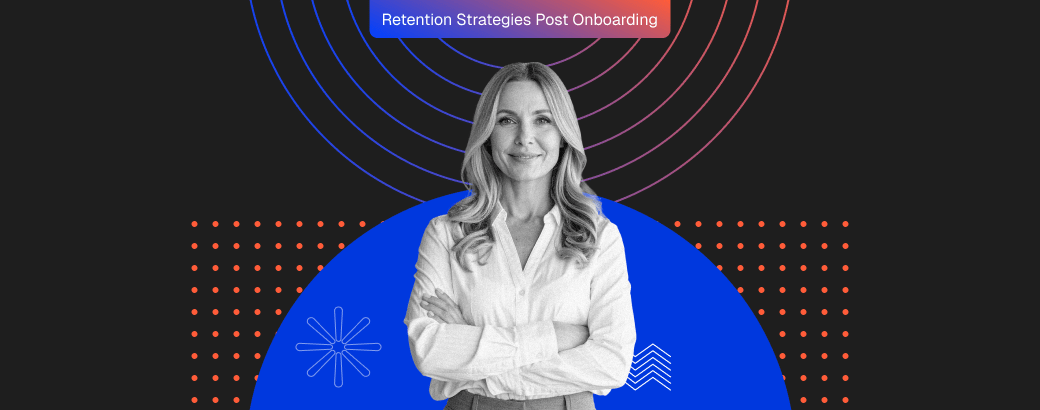Accelerate Your Retention Performance
Get a personalized roadmap from Propel’s experts!

Customer Onboarding isn’t Customer Retention. That's the clear first rule of post onboarding customer retention.
It’s the opening handshake — not the relationship.
Most teams get users to their first “aha” moment and stop there. Most of our B2C clients at Propel have done this and faced consequences, before they turned to us.
The flows, metrics, and campaigns built around onboarding are great for activation, but they rarely sustain usage.
That’s why so many brands see their engagement graphs peak during onboarding… then nosedive right after.
Let’s break down why retention collapses post-onboarding, and what technically causes it.

Post-onboarding is the most unstable stage of the user lifecycle.
You’ve delivered the initial promise — but habits haven’t formed yet.
At this point, your user is still in evaluation mode, asking:
“Is this product worth fitting into my routine?”
If there’s no second meaningful action within the next 3–5 days, retention probability drops fast.
In most B2C products, time-to-second-value (T2SV) defines long-term retention more accurately than activation ever will.
Activation vs. retention: Activation is an event. Retention is a pattern.
Activation means a user did something once.
Retention means they keep doing it naturally.
The problem is that most teams stop at “activated” users — they hit the metric, report success, and move on.
But if there’s no system for recurring triggers (emails, push, or in-app reinforcement) mapped to usage behavior, those users quietly churn.
Retention isn’t about onboarding velocity — it’s about post-onboarding memory.
Because they were built for acquisition analytics, not lifecycle visibility.
Tools track “first conversion,” “trial started,” or “purchase completed.” But they rarely measure post-action decay — how long before usage frequency drops, when sessions slow down, or when logins stop entirely.
Lifecycle visibility should extend beyond onboarding with metrics like:
If your analytics or CRM doesn’t surface these metrics automatically, you’re optimizing for the wrong part of the funnel.
Because most CRMs are static — built on triggers, not feedback.
A user opens the app once → gets a “Welcome” email.
A week later → gets a “We miss you” email.
But the CRM doesn’t know if that user is actually active in the product.
When your product analytics (Mixpanel, Amplitude) and messaging tools (Customer.io, Braze) don’t sync in real time, context dies.
You end up sending the wrong message to the wrong user at the wrong time.
Retention fails not because you didn’t send messages — but because your messages lost situational awareness.
Because it’s not glamorous — but it’s the truth.
Time-to-second-value (T2SV) measures how quickly users return after their first key action.
The shorter this gap, the stronger the habit formation.
If your T2SV is long, your product is forgettable.
If it’s short, your users are self-reinforcing — they come back without prompts.
That’s why retention optimization starts with reducing latency between the first and second action — not adding new emails or rewards.
Behavioral decay is the silent killer of retention.
Every product has a natural engagement rhythm — maybe daily for fitness, weekly for travel, monthly for finance.
When a user breaks that rhythm, it’s an early churn signal.
If you’re tracking decay signals (e.g., user hasn’t completed a workout in 5 days, or didn’t reorder within 30 days), your CRM can trigger predictive messaging before the user fully lapses.
Retention isn’t about win-back campaigns — it’s about decay prevention.
This is where companies get stuck.
Product owns usability.
Marketing owns communication.
Growth owns the funnel.
But no one owns the post-onboarding journey — the space between the first win and habit formation.
The answer: retention should be owned by a cross-functional lifecycle team that aligns product data, communication, and user psychology.
Without that shared ownership, every team optimizes locally — and retention breaks globally.
It’s not a series of campaigns — it’s a dynamic feedback system.
A healthy retention journey includes:
The best systems adapt messaging cadence and tone automatically, based on user engagement velocity — not fixed dates.
A retention system must trigger the cue → action → reward → repeat cycle.
If any one of these is missing — especially reward feedback — the loop breaks.
This is why lifecycle strategy should blend UX reinforcement with automated messaging — not separate them.
Retention doesn’t fail because onboarding was bad.
It fails because systems stop evolving after it.
Most brands optimize for first-use success, not sustained relevance.
Real retention requires data feedback loops, cross-team ownership, and adaptive messaging logic that keeps users emotionally and behaviorally hooked.
Because in 2025, retention isn’t just about keeping users —
it’s about designing systems that never give them a reason to leave.
Because most systems are built to activate users, not retain them.
They celebrate the first action but don’t track what happens next — no post-onboarding triggers, no behavior monitoring, and no emotional reinforcement.
They stop communicating contextually.
The user journey becomes generic — batch emails, irrelevant nudges, and one-size-fits-all campaigns. Once the messaging loses timing and relevance, retention collapses.
Typically 21–30 days, depending on product frequency.
The first 2–3 cycles of use determine whether the user integrates your product into their routine or forgets it entirely. That’s why time-to-second-value is so critical.
It measures how quickly a user returns to experience value again after the first key action.
The shorter the gap, the stronger the habit loop — and the higher your long-term retention.
Because they’re reactive, not predictive.
Most brands wait for users to go inactive before messaging them. Smart systems use behavioral decay signals to engage before users drift away.
Proven playbooks and strategies to turn retention into a growth driver!